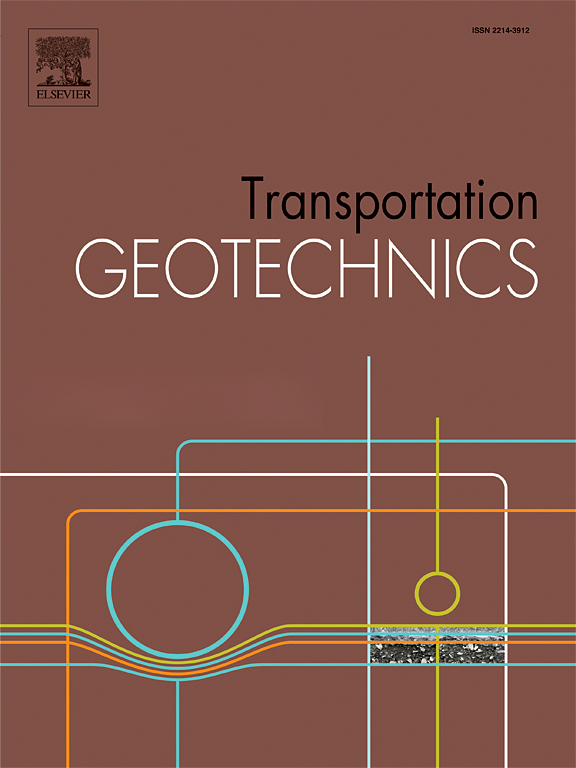Probabilistic demand models and fragility analysis of railway embankments subjected to multi-pulse ground motions
IF 4.9
2区 工程技术
Q1 ENGINEERING, CIVIL
引用次数: 0
Abstract
The pulse-like ground motion has a substantial impact on long-period structures such as railway embankments. However, previous studies have focused more on comparative analyses of ground motions with and without pulses, without distinguishing between multi-pulse and single-pulse ground motions. This study aims to quantitatively assess the differences in seismic damage to railway embankments when subjected to various pulse-like ground motions, utilizing the seismic fragility analysis method. We executed an incremental dynamic analysis of railway embankments to construct a probabilistic seismic demand model. The most effective intensity measures (IMs) were chosen from among 20 IMs using criteria of correlation, practicality, efficiency, and proficiency. The conditional probability function facilitated fragility curves by applying the optimal IMs and the engineering demand parameters, which represented the peak permanent settlement on the surface of the railway embankment. The results demonstrated the superiority of structure-specific IMs (e.g., velocity spectrum intensity and housner intensity) over acceleration-, velocity-, displacement-, and time-related IMs. The findings revealed that multi-pulse ground motions significantly impacted the uncertainty of railway embankment damage more than single-pulse ground motions, and ignoring their effects led to an underestimation of their fragility in all states of damage.
多脉冲地震动作用下铁路路堤的概率需求模型及脆弱性分析
脉冲式地震动对铁路路堤等长周期结构具有重要影响。然而,以往的研究更多地集中在有脉冲和无脉冲地震动的对比分析上,没有区分多脉冲和单脉冲地震动。本研究旨在利用地震易损性分析方法,定量评估铁路路堤在各种脉冲式地震动作用下的震害差异。我们对铁路路堤进行了增量动力分析,以构建概率地震需求模型。根据相关性、实用性、效率和熟练程度的标准,从20个强度措施中选择最有效的强度措施。条件概率函数应用最优IMs和工程需求参数简化易损性曲线,代表铁路路堤表面永久沉降峰值。结果表明,与加速度、速度、位移和时间相关的IMs相比,结构特异性IMs(如速度谱强度和壳体强度)具有优势。结果表明,与单脉冲地震动相比,多脉冲地震动对铁路路基破坏不确定性的影响更大,忽视多脉冲地震动的影响会导致低估路基在各种破坏状态下的脆弱性。
本文章由计算机程序翻译,如有差异,请以英文原文为准。
求助全文
约1分钟内获得全文
求助全文
来源期刊

Transportation Geotechnics
Social Sciences-Transportation
CiteScore
8.10
自引率
11.30%
发文量
194
审稿时长
51 days
期刊介绍:
Transportation Geotechnics is a journal dedicated to publishing high-quality, theoretical, and applied papers that cover all facets of geotechnics for transportation infrastructure such as roads, highways, railways, underground railways, airfields, and waterways. The journal places a special emphasis on case studies that present original work relevant to the sustainable construction of transportation infrastructure. The scope of topics it addresses includes the geotechnical properties of geomaterials for sustainable and rational design and construction, the behavior of compacted and stabilized geomaterials, the use of geosynthetics and reinforcement in constructed layers and interlayers, ground improvement and slope stability for transportation infrastructures, compaction technology and management, maintenance technology, the impact of climate, embankments for highways and high-speed trains, transition zones, dredging, underwater geotechnics for infrastructure purposes, and the modeling of multi-layered structures and supporting ground under dynamic and repeated loads.
 求助内容:
求助内容: 应助结果提醒方式:
应助结果提醒方式:


